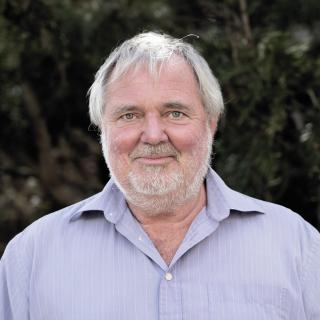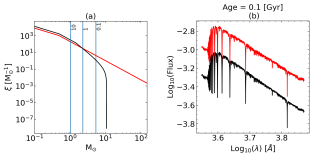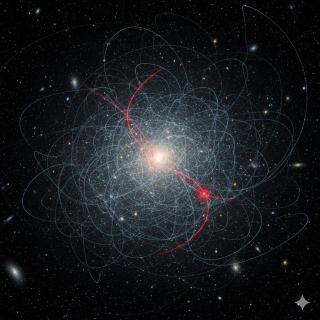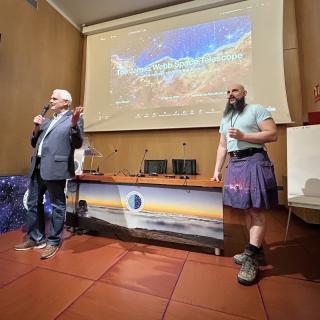| Disclaimer footnote: Any opinion, findings, and conclusions or recommendations expressed in this material are those of the authors and do not necessarily reflect the views of the US National Science Foundation. |
Vyacheslav (Slava) Lukin is a Program Director in the National Science Foundation (NFS) Division of Physics with responsibility for the program in Plasma Physics. In his own research, he focuses on understanding “magnetic reconnection”, a compex physical phenomenon which causes the aurora borealis, solar flares, coronal mass ejections and gamma ray bursts. This is a process which always takes place when lines of magnetic field embedded in a plasma (hot electrically charged gas) converge and reorganize, releasing a huge amount of energy. Understaning more about this reconnection and about the behaviour of the plasma could lead to important advances in fields such as the forecasting of space weather and development of fusion energy sources.
Studying the entangled dynamics of magnetized plasmas is not an easy task. It needs, above all, numerical exploration and the development of very accurate theoretical and computational models, a field in which Dr. Lukin is one of the world’s leading experts. The application of these models in astrophysics, especially in solar physics, has been the focus of the major part of his work carried out at the Instituto de Astrofísica de Canarias (IAC) thanks to the Jesus Serra Foundation's Visitors Programme, an initiative that supports visits by researches of high international prestige.
Question: One of your main areas of study is magnetic reconnection. In a few words, and as simply as you can, what is this phenomenon? What is the main interest in understanding this aspect of plasma physics?
Answer: Magnetic reconnection is a fundamental process in magnetized plasmas that allows tangled-up magnetic field lines in a plasma to untangle themselves. This process releases energy stored in the tangled-up magnetic field and can heat the plasma, accelerate some particles to very high velocities, and generate very bright flashes of light, such as in solar and stellar flares. Most plasmas in astrophysical systems, including our Sun, are magnetized with turbulent and constantly evolving plasma flows continuously tangling up its magnetic field. Understanding how the field becomes untangled leading to such phenomena as the 22-year solar cycle is thus critical for understanding the physics of the stars. Understanding magnetic reconnection is also important for many practical applications, including space weather prediction and design of future fusion energy reactors.
Q: What is the role of computational physics in the study of these magnetic phenomena?
A: Computational physics has gradually been occupying more and more prominent role in all of physics, and is particularly critical for understanding complex nonlinear processes where analytical "pen and paper" theory approaches have severe limitations. Plasma physics is a study of collective interactions between many many particles via electromagnetic forces, and as such is fundamentally about studying and predicting the nonlinear behavior of a complex dynamical system. As a field, plasma physics has both tremendously benefitted from, and has often pushed the frontiers of computational physics.
Q: Magnetic reconnection plays an important role in solar activity. And the Canary Island Observatories have one of the most important groups of solar telescopes in the world. How do theoretical and computational models complement astrophysical observations?
A: Solar observations without computational models are like a car without wheels; and computational models without observations are like car wheels without a car. The complexity and interdependence of the physical processes on the Sun require computational plasma models to interpret the observations and advance our understanding of the host star. On the other hand, computational modeling of the Sun without observational validation can produce models that rapidly diverge from reality. Thus, the two not only can but have to complement each other.
Q: What aspects of plasma physics are still not well understood?
A: Plasma physics is a broad field with many open questions in many of its subfields. Besides magnetic reconnection, one set of questions I recently found to be particularly fascinating is related to what happens when an electric field in some volume of space becomes so high as to produce electron-positron pairs out of vacuum. The resulting interactions between high energy photons, electrons, and positrons challenge not only the known plasma physics, but also frontiers of quantum and optical physics. The extreme plasma conditions where such electric fields can self-consistently develop are thought to exist in the atmospheres of supermassive black holes, and we will soon be able to reproduce in a laboratory using the next generation of high intensity lasers.
Q: You have studied this field of physics almost since you were a student at university. What excites you about this particular area and why would you recommend it?
A: I find plasma physics to be fascinating because it is fundamentally about learning simple truths from observing and understanding complex behavior of multitude of interacting actors. It is the simplest first principles analogue I know to how our society attempts to self-organize and function. It is a rare field of science where one can, almost at the same time, explore the wonders of the universe in how the stars and planets came to be the way they are, and work to help resolve urgent societal challenges such as clean energy production.
Q: What have you been working on during your stay at the IAC? How has it been useful for your work?
A: My IAC stay, supported by the Jesús Serra Foundation's Visitors Programme, has been tremendously productive in collaboration with the research group of Dr. Elena Khomenko, as well as Dr. Khomenko's former student, Dr. Beatrice Popescu who visited IAC at the same time. The focused in-person interaction allowed us to concentrate on drafting and completing a research paper on "Magnetic field amplification and structure formation by the Rayleigh-Taylor instability" which is currently under review and should have a significant impact on the field.







